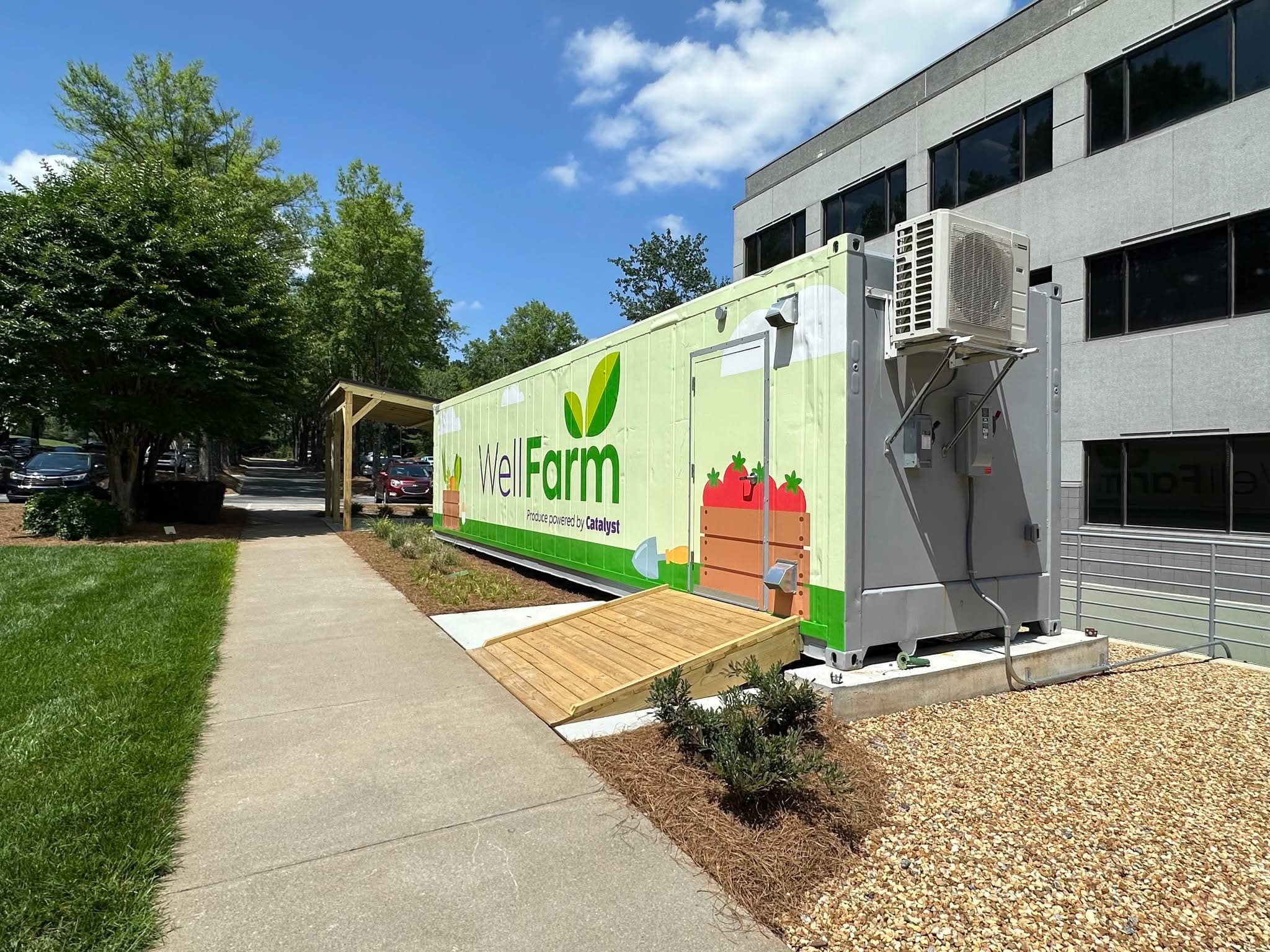Key Takeaways:
- Vertical farming is being adopted by healthcare systems to provide fresh, nutrient-rich food directly onsite.
- FarmBox Foods offers shipping container farms designed for non-farmers, with training and operational support.
- Hospitals use these systems for patient meals, cafeteria offerings, and community outreach.
- Vertical farming contributes to ESG goals and therapeutic agriculture initiatives.
- Early adopters are using it for wellness programs, cost control, and food system resilience.
For a full look at how hospitals are using shipping container farms to boost patient nutrition and reduce food insecurity, read our main article on container farms for healthcare.
Hospitals Rethink Food Supply with Vertical Farming
Hospital campuses are not typically associated with farming. But thanks to innovations in controlled environment agriculture (CEA), vertical farming is becoming part of the healthcare infrastructure.
FarmBox Foods provides container-based vertical farms that are easy to install, operate, and integrate into hospital systems. “Most of our customers are not farmers by trade,” said Brynne Doughten, Sales Program Development Consultant. “That’s the beauty of the system—it’s a formula anyone can follow.”
Plug-and-Play: Designed for Non-Farmers
FarmBox offers hands-on training tailored to each client. Trainers go onsite to help staff grow herbs, leafy greens, or mushrooms suited to therapeutic nutrition.
“We provide 90 days of operational support, and stay engaged for the life of the farm,” added Chris Michlewicz, VP of Communications. “Clients feel supported every step of the way.”
Hospitals often repurpose existing staff from food services or environmental teams to operate the farms. With a recommended one-person operation, vertical farming is highly manageable even for institutions new to agriculture.
Use Cases: From Patient Meals to Public Outreach
Wellstar Hospital's “WellFarm” is one example of vertical farming in action. Located in Georgia, the hydroponic container farm supplies produce for patient meals and cafeteria offerings, and sells herbs and greens in the gift shop.
“They grow basil, thyme, kale, and more—all used to improve nutritional therapy,” said Doughten. For immunocompromised patients, the freshness and cleanliness of onsite produce are particularly valuable.
Other healthcare systems donate excess produce to food banks, aligning with missions around food security and community health.
Vertical Farming as Therapeutic Infrastructure
There is growing interest in therapeutic agriculture as part of hospital wellness strategies. “It’s a bright, fresh-smelling space that calms people,” Michlewicz said.
Some systems also use container farms as workforce development tools, training young adults in food production to improve local skills and community resilience.
Scalability and Future Outlook
“Our technology is scalable,” Michlewicz explained. “If a hospital system has 25 locations, it can launch a pilot program at one site and replicate it system-wide.”
From Alaska to Jamaica, FarmBox Farms operate in a range of climates, making the solution viable for institutions across geographies.
As healthcare evolves, vertical farming is moving from a pilot project to a strategic investment in wellness, food access, and operational resilience.
Reach out to FarmBox Foods today!


